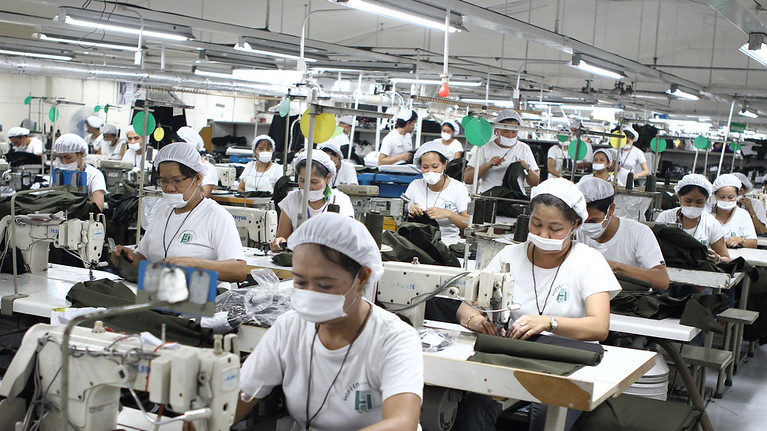The Philippine economy grew by 5.6 percent in the fourth quarter of 2023, bringing the full-year growth to 5.6 percent.
While the growth did not settle within the government’s 6 to 7 percent target and was lower than the 7.6 percent expansion in 2022, National Economic and Development Authority (NEDA) Secretary Arsenio Balisacan said the Philippines was still “one of the best-performing economies in Asia.”

Balisacan added that the full-year GDP expansion last 2023 was also 8.6 percent higher than the pre-pandemic levels.
It can be said that the Philippine economic growth will remain one of the strongest in the region, and globally, over the medium term as reported by International Monetary Fund (IMF). The IMF retained its forecasts of 6.0-percent gross domestic produt (GDP) growth for 2024. An improvement from last year’s estimated growth of 5.3 percent – and 6.1 percent for 2025.
PSA Undersecretary and National Statistician Dennis Mapa said all major economic sectors which include agriculture, forestry, and fishing, industry, and services, grew by 1.4 percent, 3.2 percent, and 7.4 percent, respectively.
Balisacan said household spending was driven by the robust growth in spending for restaurants and hotels, transport, and recreation. He said this was due to the improvements in the labor market and growth in remittances. imports of goods and services also grew by 2.9 percent. Government final consumption expenditure contracted by 1.8 percent. Year-on-year, it grew by 0.4 percent.
Balisacan said government spending in 2022 was high due to the national elections and the ramped up vaccination program
2024 Targets
Balisacan said that for now, the government is sticking to its 6.5 to 7.5 percent target this year.
“The DBCC (Development Budget Coordination Committee) will be meeting soon given this new data, to assess, reassess its programs and assumptions, but the way we see it, I don’t think that giving up your ambition this early… it’s only the first (quarter) of the year and now you want to say reduce your 6.5, that’s too defeatist,” he said.
Moving forward, Balisacan assured the public that the government will continue to implement programs and reforms that will accelerate economic growth.
He cited the need to encourage expansion in the construction industry, agriculture sector, and encourage more tourists to visit the Philippines.
“Skills training programs will need to be expanded, both in scope and coverage, to ensure an adequate supply of construction and related workers,” he said.

For the agriculture sector, Balisacan said there is a need to improve the competitiveness of the sector using research and development, cutting-edge technology, upgraded post-production facilities, value-adding investments, and improved packaging and marketing.
“To ensure that we have the fiscal resources to implement the strategies outlined above, the government will streamline, digitalize, and enhance our tax administration systems by implementing the Ease of Paying Taxes Act,” he said.
“We will also optimize the use of resources by strengthening the linkages of planning, budgeting, and operational units within and among agencies. At the same time, we will work with legislators to enact new revenue-generating measures to build a strong fiscal foundation,” he added.
The International Monetary Fund (IMF), meanwhile, also expects Philippine economic growth to remain strong this year. In its World Economic Outlook update released late Tuesday, the IMF revised upward its 2024 Philippine economic growth projection.
“Real GDP growth for 2024 was revised up slightly to 6.0 percent from the October 2023 WEO forecast of 5.9 percent, reflecting slightly stronger than expected recovery in investment and exports,” IMF resident representative to the Philippines Ragnar Gudmundsson said.
“GDP growth is expected to remain at around 6 to 6.5 percent over the medium term, making the Philippines one of the strongest performers in the region and globally,” he noted.
With additional reports: www.pna.gov.ph, Anna Leah Gonzales







